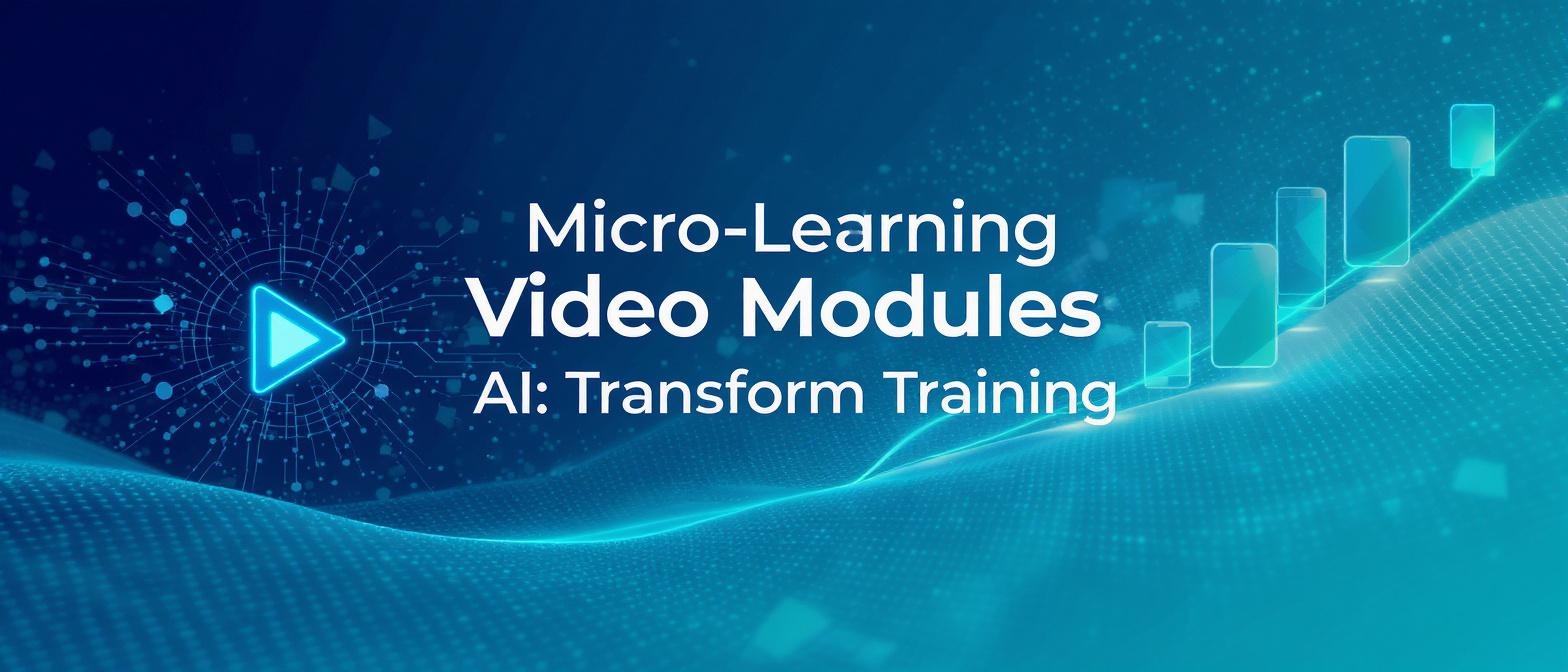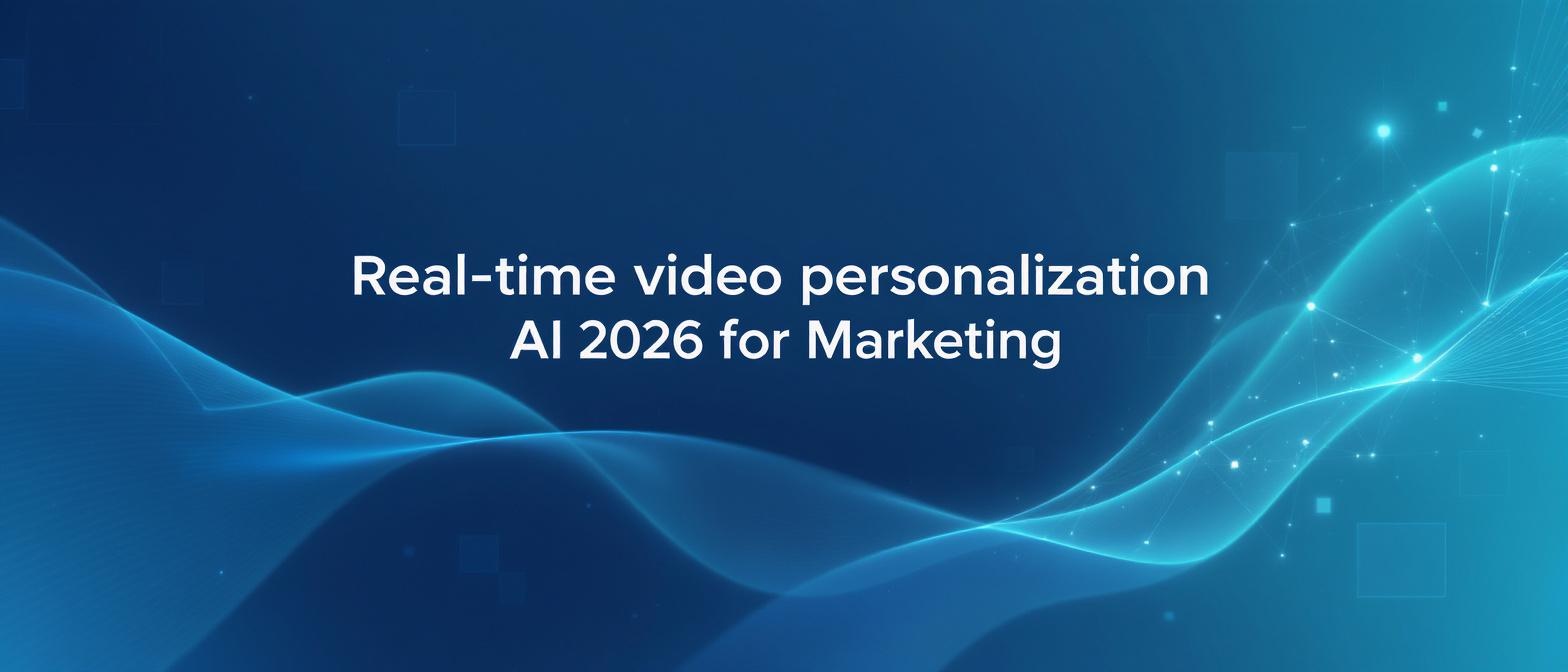AI Content Repurposing Automation 2026: The Ultimate Guide for Content Creators
Estimated reading time: 15 minutes
Key Takeaways
- AI-driven content repurposing transforms long-form videos into platform-ready snippets.
- Adopting automated workflows saves both time and money, boosting overall ROI.
- Multi-language support and avatar personalization enable global reach and consistency.
- Human oversight remains crucial for quality control and brand alignment.
- Infrastructure for end-to-end automation is key to staying competitive in the modern digital landscape.
The digital world is drowning in content. Every day, YouTubers, podcasters, and brands publish millions of hours of long-form video and audio, only for it to be seen once and then buried by the algorithm. The challenge isn’t creating content; it’s making that content work harder. This is where AI content repurposing automation 2026 emerges not just as a trend, but as a fundamental shift in digital strategy. For creators and social media teams struggling to feed the insatiable appetite of multiple platforms, this technology offers a lifeline, promising massive ROI by transforming a single asset into a library of platform-ready clips.
The explosion of short-form video has created an unprecedented demand for a constant stream of high-quality, engaging snippets. Manually chopping up a one-hour podcast or webinar into dozens of Reels, Shorts, and TikToks is a logistical nightmare—time-consuming, expensive, and difficult to scale. AI-driven automation solves this problem, offering a seamless bridge between long-form depth and short-form reach. This guide explores the tools, workflows, and strategies that will define content creation and distribution in 2026 and beyond, with a focus on cross-platform video automation and the rise of intelligent content atomization tools in India and globally.
What Is AI Content Repurposing Automation?
AI content repurposing automation is the use of artificial intelligence and machine learning technologies to automatically analyze, segment, and reformat a single long-form content asset—such as a webinar, podcast, or keynote speech—into numerous shorter, platform-specific clips. It’s the engine behind modern content marketing scalability.
This process, often called “content atomization,” moves beyond simple manual editing. Instead of a human editor scrubbing through hours of footage to find compelling moments, AI does the heavy lifting. It identifies key topics, emotional peaks, and viral-worthy highlights, then automatically generates clips, adds captions, and reformats them for various social media feeds.
Core functions of these AI systems include:
- Intelligent Highlight Detection: AI algorithms analyze transcripts, audio cues (like laughter or changes in tone), and visual action to pinpoint the most engaging or important segments of a video or podcast.
- Automated Clip Generation: Based on the detected highlights, the system automatically creates dozens of short video clips, saving countless hours of manual work.
- Auto-Captioning and Transcription: The AI generates accurate, time-synced captions and full transcripts, making content more accessible and discoverable. This is crucial, as the vast majority of social videos are watched with the sound off.
- Smart Format Conversion: The technology automatically reformats clips into the aspect ratios required by different platforms, such as vertical 9:16 for TikTok and Reels, square 1:1 for LinkedIn or Instagram feeds, and traditional 16:9 for YouTube.
The demand for this technology is fueled by clear consumer preferences. A 2025 HubSpot report revealed that 73% of consumers prefer short-form video to learn about new products or services (Source: HubSpot Marketing Statistics). AI automation makes it possible to meet this demand at scale. This shift from manual to automated workflows is not just about efficiency; it’s about survival in a competitive digital landscape.
Why YouTubers, Podcasters & Agencies Are Embracing Automation
The adoption of video repurposing workflow automation is accelerating across the content creation industry, from individual YouTubers to large-scale marketing agencies. The benefits are too significant to ignore, directly addressing the core challenges of modern content strategy: time, cost, consistency, and scale.
1. Monumental Time Savings
The most immediate benefit is reclaiming time. A human editor might spend 4–8 hours meticulously cutting a one-hour podcast into 20 social media clips. An AI tool can accomplish the same task in minutes. This frees up creators and editors to focus on higher-value activities like strategy, creative development, and community engagement instead of repetitive, manual labor.
2. Unwavering Brand Consistency
When multiple editors or freelancers are involved, maintaining a consistent brand style across dozens or even hundreds of clips is a major challenge. Platforms like Studio by TrueFan AI enable teams to apply uniform branding, including logos, color schemes, and caption styles, across every generated clip automatically. This ensures a cohesive and professional brand presence on all platforms.
3. Unprecedented Scalability
Imagine turning a single two-hour webinar into over 100 unique pieces of micro-content. This is the power of AI-driven scalability. It allows a small team—or even a solo creator—to maintain a high-volume, multi-platform content calendar that would typically require a full production house. A single long-form video can become a month’s worth of social media posts, fueling channels like YouTube Shorts, Instagram Reels, and LinkedIn.
4. Measurable Engagement Uplift
AI tools don’t just chop up video; they identify the moments most likely to resonate with an audience. By analyzing for keywords, questions, and emotional peaks, the generated snippets are inherently more engaging. Tailoring these clips to the native format of each platform further boosts performance metrics like watch time, shares, and audience retention.
In a diverse and rapidly growing market like India, these benefits are even more critical. With audiences fragmented across YouTube, Instagram, LinkedIn, and regional platforms like ShareChat, the demand for localized, multi-platform content is immense. A 2025 SurveyMonkey study underscores this trend, finding that 56% of Indian marketers plan to adopt AI for their video workflows, recognizing its power to manage multi-platform video repurposing India-wide (Source: SurveyMonkey). The ability to convert a single piece of content into dozens of clips, some even translated or subtitled for different linguistic audiences, is a game-changer.
Leading Tools for Automated Clip Generation & Distribution in 2026
The market for AI video snippet generator tools has matured rapidly, offering a range of solutions for different needs and budgets. Here’s a breakdown of the top players shaping the landscape in 2026.
1. Studio by TrueFan AI
Ideal Use Case: Enterprises, agencies, and creators needing scalable, high-quality, and compliant AI video generation with photorealistic avatars.
Key Features: Studio by TrueFan AI is a self-serve SaaS platform that excels in creating branded content at scale. Its library of pre-licensed AI avatars (like Gunika, Annie, and Aryan) allows for consistent messaging without needing to film a real person. Its script-to-video engine supports over 175 languages, making it a powerhouse for global campaigns. With API integration, HD/4K output, and robust moderation, it’s built for serious production workflows.
Pricing: Tiers start with a “Starter” plan for individuals, a “Growth” plan for teams, and custom “Enterprise” solutions for bespoke needs like custom avatar training.
2. Quso.ai (formerly Vidyo.ai)
Ideal Use Case: Podcasters, coaches, and thought leaders looking to turn long-form interviews and talks into viral social clips.
Key Features: Trusted by millions, Quso.ai specializes in identifying the most compelling moments from video podcasts. It automatically adds dynamic captions, applies branding, and provides tools for scheduling content directly to social media.
Pricing: Offers a free tier for basic use, with paid plans that unlock more upload minutes and advanced features.
3. Pictory
Ideal Use Case: Content marketers and bloggers who want to turn text-based content (like articles) into videos or extract highlights from existing videos.
Key Features: Pictory’s AI is adept at analyzing long videos to automatically detect and present the most engaging highlights. It also excels at creating videos from scripts or blog posts, sourcing stock footage, and adding voiceovers.
Pricing: Subscription-based, with different tiers based on the number of videos and features required.
4. OpusClip
Ideal Use Case: Creators focused on generating “viral” short-form videos with a single click.
Key Features: OpusClip positions itself as a “one video to 50 clips AI” solution. Its AI analyzes a video for viral potential, identifies hooks, and automatically reframes the clips to focus on the speaker. It also provides a virality score for each generated clip.
Pricing: Offers a free trial and credit-based system, with paid plans for higher volume.
5. Descript
Ideal Use Case: Podcasters and video editors who prefer a text-based editing workflow.
Key Features: Descript transcribes your audio/video, allowing you to edit the content by simply editing the text document. It offers powerful features like “Studio Sound” for audio enhancement, overdub for correcting mistakes with an AI voice clone, and batch exporting of clips.
Pricing: Includes a free tier, with paid plans for more transcription hours and advanced collaboration features.
6. Adobe Podcast
Ideal Use Case: Audio creators and podcasters looking for simple, high-quality audio enhancement and basic video clip creation.
Key Features: While known for its “Enhance Speech” feature that makes amateur recordings sound professional, Adobe Podcast also allows users to convert audio files into simple, shareable social video clips with captions.
Pricing: Many features are available for free, with integration into the broader Adobe Creative Cloud suite.
Step-by-Step Guide to End-to-End Automation
Building an automated video repurposing workflow automation pipeline transforms content strategy from a reactive, manual process into a proactive, efficient system. Here’s a six-step guide to achieving end-to-end automation.
Step 1: Centralize Long-Form Assets
Your workflow needs a single source of truth. Store all your master long-form videos and podcasts in a dedicated cloud repository like Google Drive, Dropbox, Vimeo, or a Digital Asset Management (DAM) system. This ensures your AI tools can easily access the source files.
Step 2: Trigger AI Highlight Detection & Clip Generation
Connect your repository to your chosen AI repurposing tool. For advanced workflows, use webhooks or APIs. For example, you can set up a system where uploading a new video to a specific Vimeo folder automatically triggers the automated clip generation AI in a tool like Studio by TrueFan AI or Quso.ai. The AI then gets to work analyzing the content and creating dozens of potential clips.
Step 3: Auto-Captioning and Multi-Aspect Ratio Conversion
Once the clips are generated, the system should automatically transcribe and add burned-in captions. Simultaneously, it should convert each clip into the essential aspect ratios: 16:9 for YouTube, 1:1 for feed posts, and 9:16 for Shorts, Reels, and TikTok. This ensures every clip is natively optimized for its destination platform.
Step 4: Automate Metadata Tagging
This is a crucial but often overlooked step. Use AI to automatically tag each clip with relevant metadata, such as the parent topic, target platform, language, and relevant keywords. This makes your content library searchable, helps with SEO, and allows your scheduling tools to select the right content for the right audience.
Step 5: Implement Automated Content Distribution
Connect your AI clip generator to automated content distribution tools like Buffer, Hootsuite, or use direct API integrations. Create rules to govern the publishing schedule. For example, you can set a rule to publish one new Reel every morning and one LinkedIn video every afternoon. This creates a consistent “always-on” content engine. A 2025 Deloitte report on digital media trends highlights the dominance of hyperscale social video platforms, making this automated, high-frequency posting essential for staying relevant
(Source: Deloitte).
Step 6: Monitor, Analyze, and Iterate
The workflow doesn’t end at publishing. Use analytics to track the performance of each clip. Monitor metrics like engagement rate, watch-through rate, and click-throughs on your calls-to-action. Feed this data back into your strategy to refine what kind of content the AI should prioritize in the future.
How TrueFan’s Custom AI Integrations Power Hyper-Personalized Content
While many tools focus on repurposing public-facing content, the next frontier is hyper-personalization at an enterprise scale. This is where custom AI tools & integrations become a competitive moat, and platforms like Studio by TrueFan AI lead the market in delivering these advanced capabilities. Their technology goes beyond simple clip generation to power complex, data-driven video communication strategies.
Avatar Library & Custom Spokesperson Training
Imagine sending a personalized video message from your company’s CEO to 10,000 employees or a unique product update from a familiar brand ambassador to a million customers. Studio by TrueFan AI’s 175+ language support and AI avatars—both from a pre-licensed library and through custom training of a brand’s own spokesperson—make this possible. This scales personalized communication while maintaining absolute brand consistency, a feat impossible with traditional video production.
Script-to-Video & In-Browser Editor
Speed is critical in enterprise communication. Studio by TrueFan AI’s platform allows teams to go from a script to a finished, branded video in minutes. The in-browser editor lets users quickly add subtitles, trim timing, switch aspect ratios, and overlay graphics without needing specialized video editing software, democratizing video creation across the organization.
Enterprise-Grade Governance & Compliance
For large organizations, brand safety and compliance are non-negotiable. Studio by TrueFan AI is built with this in mind, featuring real-time profanity filters, strict content moderation, and watermarked proofs for review cycles. The platform is ISO 27001 and SOC 2 certified, ensuring it meets the highest standards for data security and governance.
Deep Integration Capabilities
The true power of enterprise AI content repurposing automation 2026 lies in its ability to integrate into existing business systems. Studio by TrueFan AI offers robust API and webhook capabilities to connect with e-commerce platforms (for auto-generating product videos), CRMs, WhatsApp, and marketing automation pipelines.
- Case Example: An Indian ed-tech enterprise leveraged this integration to auto-generate over 10,000 hyper-personalized video messages for prospective students. By pulling data from their CRM, each video addressed the student by name and highlighted the specific course they were interested in. This campaign resulted in a remarkable 30% increase in course enrollment compared to standard email outreach.
You can explore these self-serve capabilities at studio.truefan.ai.
Calculating Time Saved, Engagement Gains & Revenue Impact
Adopting AI repurposing tools isn’t just about streamlining workflows; it’s about delivering a measurable return on investment (ROI). To justify the investment and prove success, you need to track the right metrics. Solutions like Studio by TrueFan AI demonstrate ROI through significant gains in efficiency, audience engagement, and ultimately, revenue.
Here’s how to calculate the impact:
1. Time Saved Per Month
Formula: (Manual Hours Per Video x Videos Per Month) – (AI Hours Per Video x Videos Per Month) = Hours Saved
Example: If it takes 6 hours to manually repurpose one podcast and you produce 4 podcasts a month, that’s 24 hours of work. If an AI tool reduces that time to 30 minutes per podcast (2 hours total), you save 22 hours per month. Multiply those hours by your editor’s hourly rate to get a clear dollar value.
2. Engagement Lift
Method: Benchmark your average engagement rate (likes, comments, shares per follower) on short-form video content for the three months before implementing AI automation. Then, track the same metric for the three months after.
Example Stat: According to a 2025 Wistia report, brands that adopt AI-driven repurposing strategies often report a 2–3x increase in engagement on their YouTube Shorts and Instagram Reels, as the content is more consistently posted and better optimized for each platform
(Source: Wistia).
3. Conversion Boost
Method: Track the click-through rate (CTR) on calls-to-action (CTAs) placed in your AI-generated clips. Use unique tracking links (like UTM codes) for different platforms to see which channels are driving the most valuable traffic to your website, landing pages, or product pages.
4. Cost Per Clip Analysis
Formula: (Monthly Tool Subscription Cost + Labor Cost for Oversight) / Total Clips Produced = AI Cost Per Clip
Comparison: Calculate the cost of producing a single clip using a freelance editor (Editor’s Hourly Rate x Hours Per Clip). The difference will almost always show a dramatically lower cost per asset when using AI.
By tracking these key performance indicators, you can build a powerful business case for investing in AI content repurposing automation 2026 and prove its direct impact on your bottom line.
Avoiding Pitfalls & Ensuring Quality at Scale
While AI automation offers incredible power, a “set it and forget it” approach can lead to brand misalignment and low-quality output. To succeed, you must pair automation with smart governance and strategic oversight. Here are some best practices to avoid common pitfalls.
1. Establish Strong Data Governance & Brand Compliance
Before you automate anything, codify your brand guidelines. Create templates within your AI tools that have your brand’s fonts, colors, and logo placement locked in. Develop a central repository of approved scripts, talking points, and messaging pillars to ensure the AI’s output is always on-brand. This is especially critical for content atomization tools India, where regional nuances in language and culture require careful management.
2. Maintain a Human-in-the-Loop (HITL) for Quality Control
AI is excellent at identifying highlights, but it can lack human nuance. It might miss sarcasm, misinterpret a joke, or create a clip that lacks context. Implement a mandatory “human-in-the-loop” review step. This doesn’t mean watching every second of footage; it means having a person quickly review the AI-suggested clips to approve, reject, or make minor edits before they are scheduled. This hybrid approach combines the speed of AI with the wisdom of human oversight.
3. Enforce Metadata and Naming Consistency
Without a standardized system, your content library can quickly become a chaotic mess. Create a strict naming convention for all generated clips (e.g., [ParentVideoName]_[ClipTopic]_[Platform]_[Date]). Ensure your metadata tagging is consistent across all assets. This discipline is essential for long-term organization, searchability, and effective use of automated content distribution tools.
4. Test Batch Scheduling vs. Real-Time Posting
Don’t assume the same posting schedule works for every platform. Use your automation tools to A/B test different scheduling strategies. You might find that LinkedIn performs best with a single, high-impact video post in the morning, while Instagram Reels benefit from multiple posts spread throughout the day. Let data, not assumptions, guide your distribution strategy for your video to shorts automation tools.
What’s Next for AI-Powered Content Repurposing? A Look to 2030
The field of AI content repurposing automation 2026 is just scratching the surface of its potential. As AI models become more sophisticated and integrated, we are heading toward a future of fully autonomous, hyper-personalized media. Here’s what to expect by 2030.
1. Hyper-Individualized, Real-Time Video Experiences
Future AI will move beyond repurposing one-to-many content. It will create one-to-one video experiences in real-time. Imagine a viewer visiting a product page, and an AI instantly generates a video featuring a virtual avatar that addresses the viewer by name, uses their language, and answers the specific questions they just typed into a search bar.
2. Synthetic, Multi-Modal Content Generation
The line between repurposing and original creation will blur. Agentic AI workflows will be able to generate completely new, synthetic video clips by combining various assets: pulling key ideas from a blog post, generating a script, creating a voiceover with an AI voice clone, animating it with a virtual avatar, and overlaying it with AI-generated graphics and AR elements.
3. Increased Regulation and AI Governance Frameworks
As AI’s role in media creation grows, so will the need for regulation. We can expect governments, particularly in regions like India and the EU, to introduce stricter AI governance frameworks to address issues of deepfakes, misinformation, and data privacy. A recent McKinsey report on AI in the workplace emphasizes the growing importance of building “super-agency,” where humans and AI collaborate within strong ethical frameworks to unlock potential
(Source: McKinsey).
4. Fully Autonomous, End-to-End Media Production
By 2030, we will see the rise of fully autonomous AI agents that can manage the entire content lifecycle. An AI agent could be tasked with: “Monitor our company’s weekly town hall, generate the 10 best clips for LinkedIn, write the posts, schedule them for optimal engagement, and provide a performance report by Friday.” This level of cross-platform video automation will allow marketing teams to operate at a strategic level previously unimaginable.
Conclusion: The Automated Future is Here
The era of manual, painstaking video editing is over. AI content repurposing automation 2026 has fundamentally and permanently altered the content creation landscape. For YouTubers, podcasters, marketers, and agencies, embracing this technology is no longer a choice—it’s essential for survival and growth. By leveraging AI to atomize long-form content, you can save hundreds of hours, maintain brand consistency, scale your output exponentially, and dramatically increase audience engagement and ROI.
The tools and workflows outlined in this guide provide a clear roadmap for building a powerful, automated content engine. From intelligent clip generation to hyper-personalized enterprise solutions, the future of content is intelligent, scalable, and automated.
Ready to unlock hyper-scalable video repurposing? Try Studio by TrueFan AI today.
Frequently Asked Questions
1. Can AI truly understand which parts of my video are the most “viral”?
Yes, to a large extent. AI models analyze a combination of signals, including transcript keywords (like questions or lists), emotional sentiment in the speaker’s tone, audience reactions if available (like laughter), and visual cues. While not perfect, tools like OpusClip and Quso.ai are surprisingly effective at identifying moments that have the core elements of a viral clip, such as a strong hook or a controversial statement.
2. How much human oversight is needed for AI content repurposing?
While the goal is automation, a “human-in-the-loop” approach is highly recommended. You should plan for a quick review process where a team member can approve or reject the clips suggested by the AI. This ensures contextual accuracy and brand alignment. The AI does about 90% of the work, and a human provides the final 10% of critical oversight.
3. Will AI repurposing tools work for content in languages other than English?
Absolutely. This is a key strength of modern AI. Many leading platforms offer robust multi-language support. For instance, Studio by TrueFan AI’s 175+ language support and AI avatars allow you to not only add accurate captions in different languages but also generate new video content with AI avatars speaking those languages fluently, making it ideal for global brands and creators.
4. What is the biggest mistake companies make when adopting these tools?
The biggest mistake is a lack of strategy. Companies often buy a tool without first defining their goals, brand guidelines, or distribution workflow. They end up with a high volume of off-brand, low-impact clips. Success requires building a clear process for content centralization, quality control, metadata tagging, and performance analysis before turning on the automation.
5. How do I choose the right AI repurposing tool for my needs?
Consider three factors: your primary content type, your budget, and your scalability needs.
For Podcasters/Interviewers: Tools like Quso.ai or Descript are excellent.
For Text-to-Video: Pictory is a strong choice.
For Viral Clip Focus: OpusClip is designed for this.
For Enterprise/Agency Scale: A comprehensive platform like Studio by TrueFan AI is the best fit, offering avatars, advanced compliance, and deep API integrations for complex, high-volume workflows.
6. Can these tools handle videos with multiple speakers?
Yes, most modern AI tools are designed to handle multiple speakers. They can typically identify who is speaking and will automatically reframe the video to focus on the current speaker. Many also label the speakers in the transcript, making it easy to create clips centered on a specific person’s dialogue.
7. Is the video quality from AI tools good enough for professional use?
Yes. While early AI video tools often produced lower-resolution content, today’s leading platforms can output high-quality video. Many tools, including Studio by TrueFan AI, offer exports in full HD (1080p) and even 4K, making the final clips perfectly suitable for professional use on corporate websites, social media, and digital advertising.





